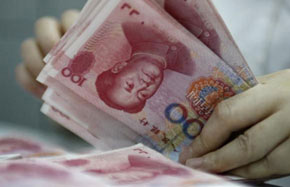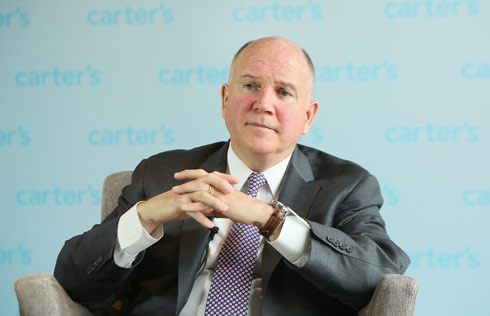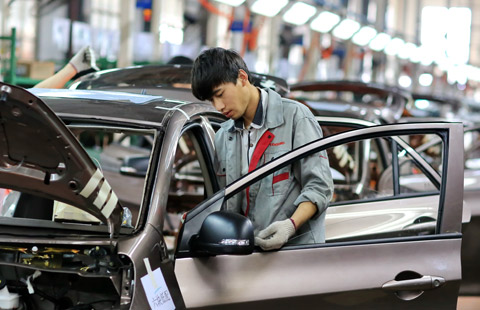China's investments help least developed countries pursue brighter future
BEIJING - Least developed countries (LDCs) are benefitting from lucrative business deals with China, with the world's second-largest economy becoming the biggest injector of foreign direct investment (FDI) in these countries.
Between 2010 and 2015, the stock of Chinese FDI in LDCs more than tripled to $31 billion, making China by far the largest investor, said a 2017 United Nations (UN) report on the state of the LDCs.
Not only capital
As agriculture still employs the largest share of the population in most LDCs, China's focus on agriculture investment will lay the groundwork for local farmers to acquire modern farming technologies and sell their products abroad.
Run Ta Ek, a pilot eco-village located about 20 km from the Angkor world heritage site in Cambodia's northwestern Siem Reap province, now benefits from China's agricultural investments to alleviate poverty.
Founded in 2004, the 1,012-hectare eco-village can accommodate around 850 families. The government offered 20 hectares of land in the village to Forword Company from Southwest China's Guangxi Zhuang autonomous region to implement a gardening and farming pilot project for the next 20 years.
The company built a small vegetable yard open for all villagers with the main purpose of showing and teaching agricultural techniques to local farmers.
"They teach us, transfer to us their knowledge, and after we produce vegetables and food, they will buy them back," said Mey Marady, director of the Run Ta Ek eco-village development project, pointing out that this buying-back policy really gives the farmers confidence in long-term development.
In Zimbabwe, Chinese tobacco company Tianze has injected $40 million annually in interest-free loans and subsidized inputs, in addition to free technical support, training and other services to its contracted farmers.
Through its support, Zimbabwe's tobacco output has rebounded and reached 217 million kilograms in 2014, which had plummeted to a low of 48 million kilograms in 2008.
"Chinese investment in agriculture has to a large extent sustained Zimbabwe's tobacco industry through the outgrower scheme operated by Chinese firms. In addition to providing capital for farmers, the outgrower scheme has guaranteed a ready market for Zimbabwean tobacco and ensured the viability of the sector," said Joseph Ngwawi, head of the Regional Economic Development Institute at the Southern Africa Research and Documentation Center.
Integration into local market?
In the price-sensitive markets of the LDCs, an increasing number of local people have become very reliant upon Chinese products and technologies, which are competitively priced, durable and have good after-sales service.
Currently, more than 90 percent of digital television (DTV) users in Burundi's capital city Bujumbura choose the Chinese company StarTimes, said Chen Yongzheng, general manager of StarTimes in Burundi.
"I choose StarTimes because it has good channels, including children's channels, also because of the price, which is cheaper than other companies'," 31-year-old technician Edouard Nduwimana told Xinhua.
StarTimes' service is also better than other companies', he added.
Chen said the Chinese media group has lowered the barrier of using DTV in Burundi, which was only for the rich before 2010 when StarTimes entered the market. Besides offering DTV at a lower price, it provides customers with good after-sales service, he said.
In South Africa, Hisense, a China-based home electronics manufacturer, has successfully integrated itself into the local business culture by greatly contributing to the local social economic development and creating hundreds of jobs.
In contrast to many other foreign investment companies, Hisense has opted to open its major manufacturing facility in South Africa in an attempt to create local job opportunities instead of importing products from overseas plants, said Claire Noyes-Smith, marketing manager at Hisense South Africa.
In the last two decades, the brand, which is widely recognized as a cost-effective alternative in home electronics, has expanded to South Africa's four major cities and is now found in over 3,500 retail stores nationwide as well as 10 neighboring countries.
Creating a brighter shared future?
To help shape a better world for all, Chinese President Xi Jinping has proposed the notion of building "a community of shared future," and the Belt and Road Initiative to materialize his vision.
Beijing holds that by building highways, railroads, bridges and ports, different parts of the world can be better connected, thus creating potential for stronger development.
From the perspective of LDCs, Chinese investments - especially in infrastructure projects - are more than welcome. Without convenient transportation, potable water, adequate power and reliable communication, the least developed countries cannot thrive.
With the recent launch of operation of Kenya's Mombasa-Nairobi railway, China's remarkable infrastructure capabilities are again being highlighted and promoting regional interconnectivity to pave the way for global economic growth.
The Chinese-built 472-km-long Standard Gauge Railway (SGR) linking Kenya's capital Nairobi and East Africa's biggest port city Mombasa comes as part of ambitious efforts to build a 2,700-km East Africa corridor connecting Kenya, Uganda, Rwanda, South Sudan and other East African countries.
It was constructed at a cost of $3.6 billion, co-financed through commercial and semi-concessional loans from China and input from the Kenyan government
The recent launch of the much anticipated SGR has also been a game-changer with the project ushering in a new era in the transport of goods and people from the coast to the hinterland and vice versa, said Stephen Ndegwa, a lecturer at MultiMedia University and public policy analyst in Kenya.
In Ethiopia, China has built and financed a $4.2 billion 756 km Ethiopia-Djibouti electrified rail line to boost Ethiopia's industrial exports.
The electrified rail line, the first trans-boundary electrified rail line in Africa, is expected to start commercial operation in October.
Once the electrified rail line starts operation, it's expected that average transportation time to reach Djibouti port from the Ethiopian hinterland will be cut from two days to 10 hours.
"The industrial parks lying on the path of the rail line will be a game changer for both countries and in general for the region, enhancing economic transformation and easing transportation of goods," said Ahmed Shide, Ethiopia's minister of transport.

























